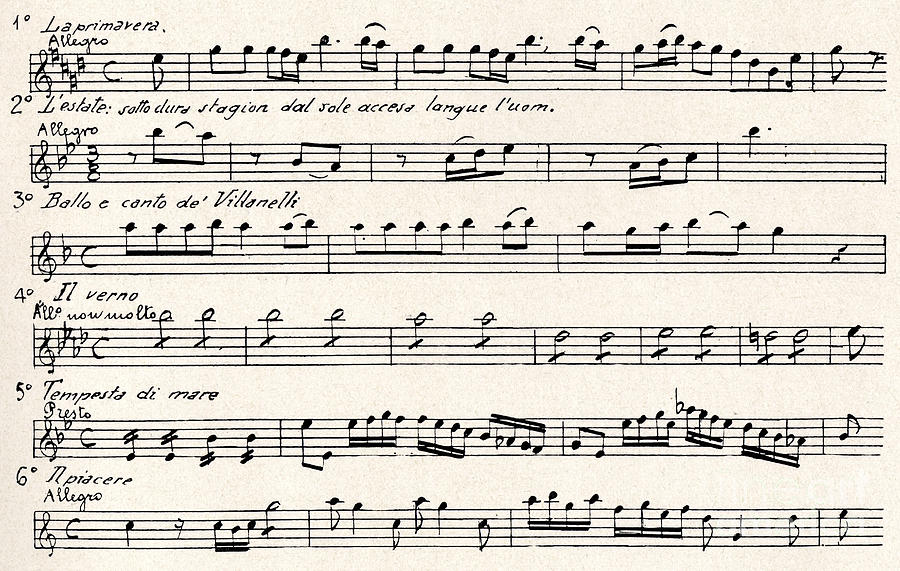
Vivaldi was working in Mantua and had already written dozens of violin concertos prompted by the fact that he was probably the best violinist on the planet. If you’ve ever wondered how on earth a composer can describe specific human interactions or states of mind, in an orchestral work without recourse to setting words, then you’re thinking on the very same quandary that was occupying the sizeable brain of Antonio Vivaldi in the early 1720s. The crux of the issue was musical ‘description’. In these seemingly polite and pretty works, the composer opened a philosophical can of worms that continued to brim over with wriggling controversies for centuries. The Four Seasons had the theorists frothing too. And it wasn’t just the concert-going folk of northern Italy who experienced Vivaldi’s stylistic shot-in-the-arm. They might not have provoked a riot but, when Vivaldi’s Four Seasons were first heard in the early 1720s, their audience hadn’t heard anything quite like them before. Like those other seismic cultural milestones, Vivaldi’s most popular concertos also changed the course of musical history. Stravinsky’s Rite of Spring, Beethoven’s Fifth… and yes, Vivaldi’s The Four Seasons.

The Four Seasons: A Guide To Vivaldi’s Radical Violin Concertos


 0 kommentar(er)
0 kommentar(er)
